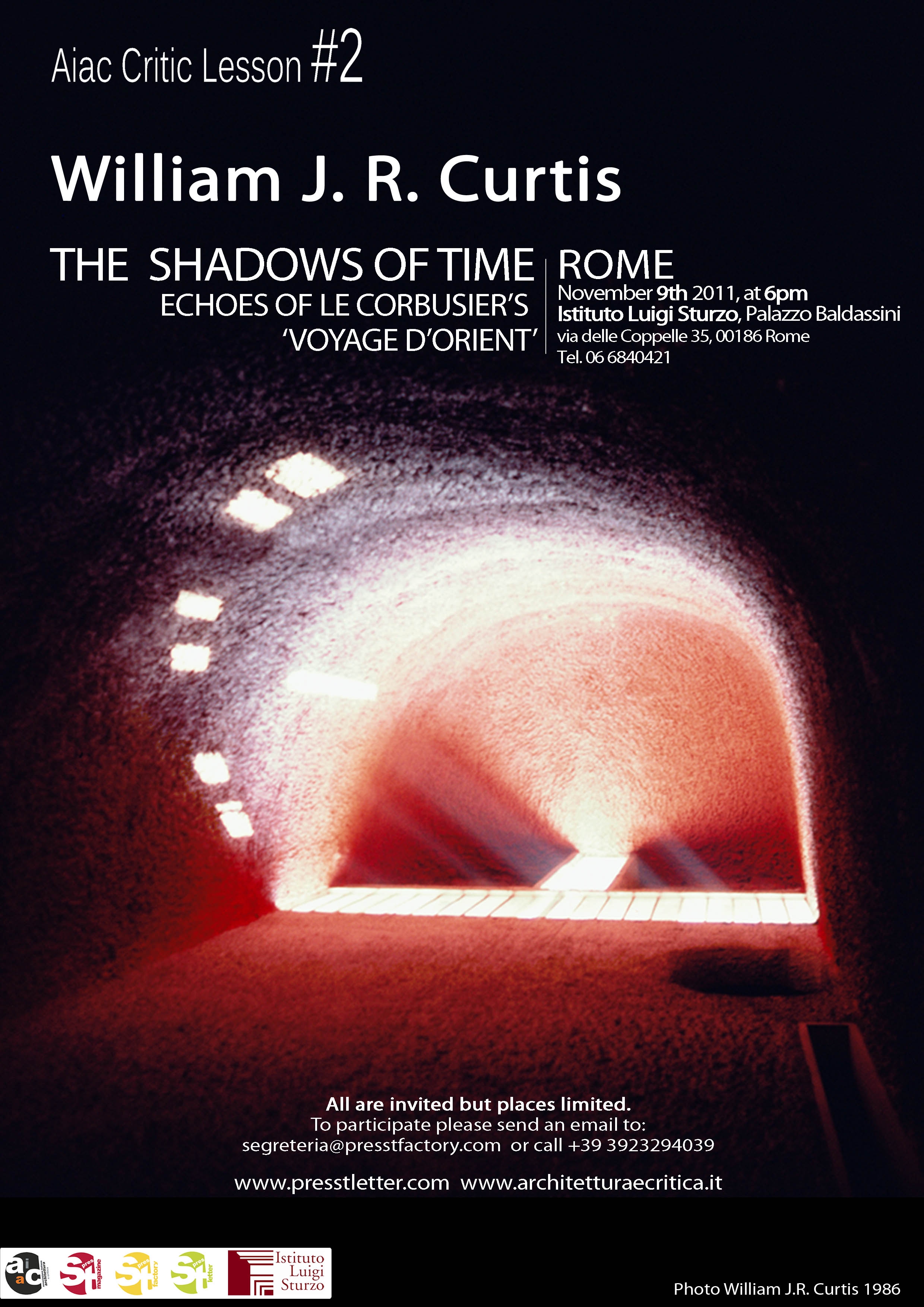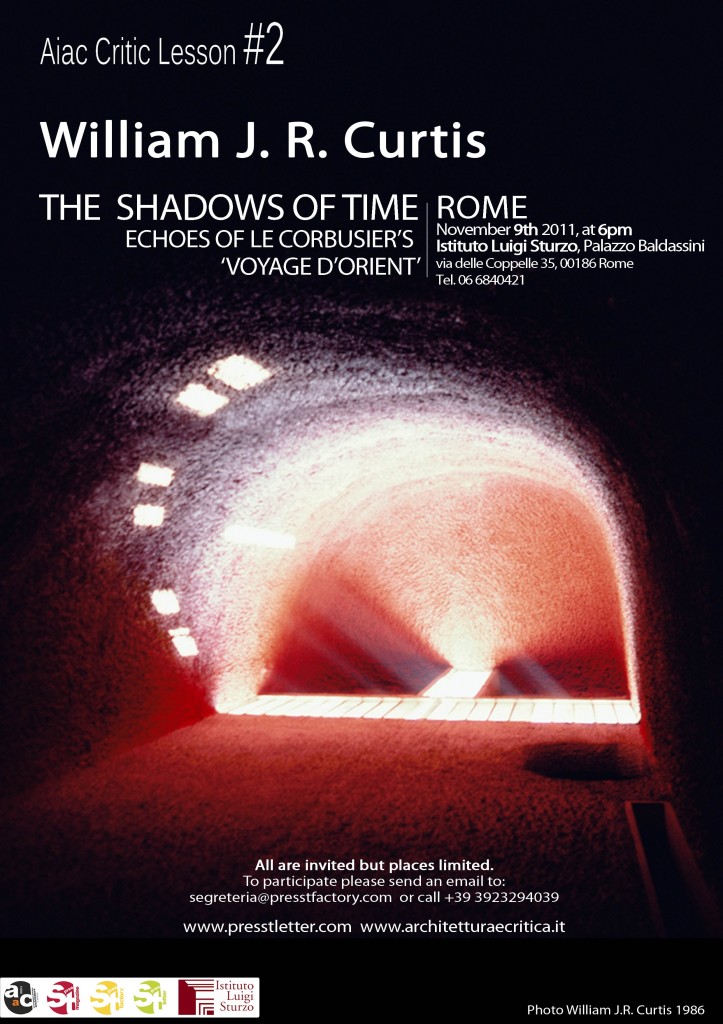In 1911 the 24 year old Charles Edouard Jeanneret (the future Le Corbusier)
undertook his famous ‘Voyage d’Orient’ through the Balkans, to Istanbul and
Bursa, the Monasteries of Mount Athos, the Acropolis in Athens, the ruins of
Pompeii, the Villa Adriana, and of course Rome. As he went he sketched and
photographed what he saw, storing up impressions for later use. In later life
the architect referred to the Voyage in almost epic terms, as if he had
returned to the roots of Mediterranean civilization in search of the essentials of
architecture itself. In 1929, the year of that canonical modern work the Villa
Savoye at Poissy, the so called ‘pope’ of modernism declared that he was
accused of being a revolutionary but that the past was ‘his only real master’.
To honour the Centenary of the Voyage d’Orient (1911-2011) William
J.R. Curtis (the author of several seminal works on both Le Corbusier
and modern architecture in general) will deliver a lecture with the title
‘The Shadows of Time. Echoes of Le Corbusier’s ’Voyage d’Orient’. In
this he will reflect upon the architect’s powers of observation, abstraction and
transformation, suggesting ways in which Le Corbusier penetrated to the
underlying ideas of past examples prior to integrating them in his own creative
universe. The lecture will consider ‘the poetry of ruins’, the search for
constants in tradition, and the role of metamorphoses in the architect’s
processes of invention. In turn it will evoke the meaning of shadow and light in
Le Corbusier’s architecture, and the role of both memory and the dark
recesses of the unconscious in his mythical interpretation of the world. Above
all the lecture will be concerned with the ‘presence of the past’ in the mind of a
great architect.

